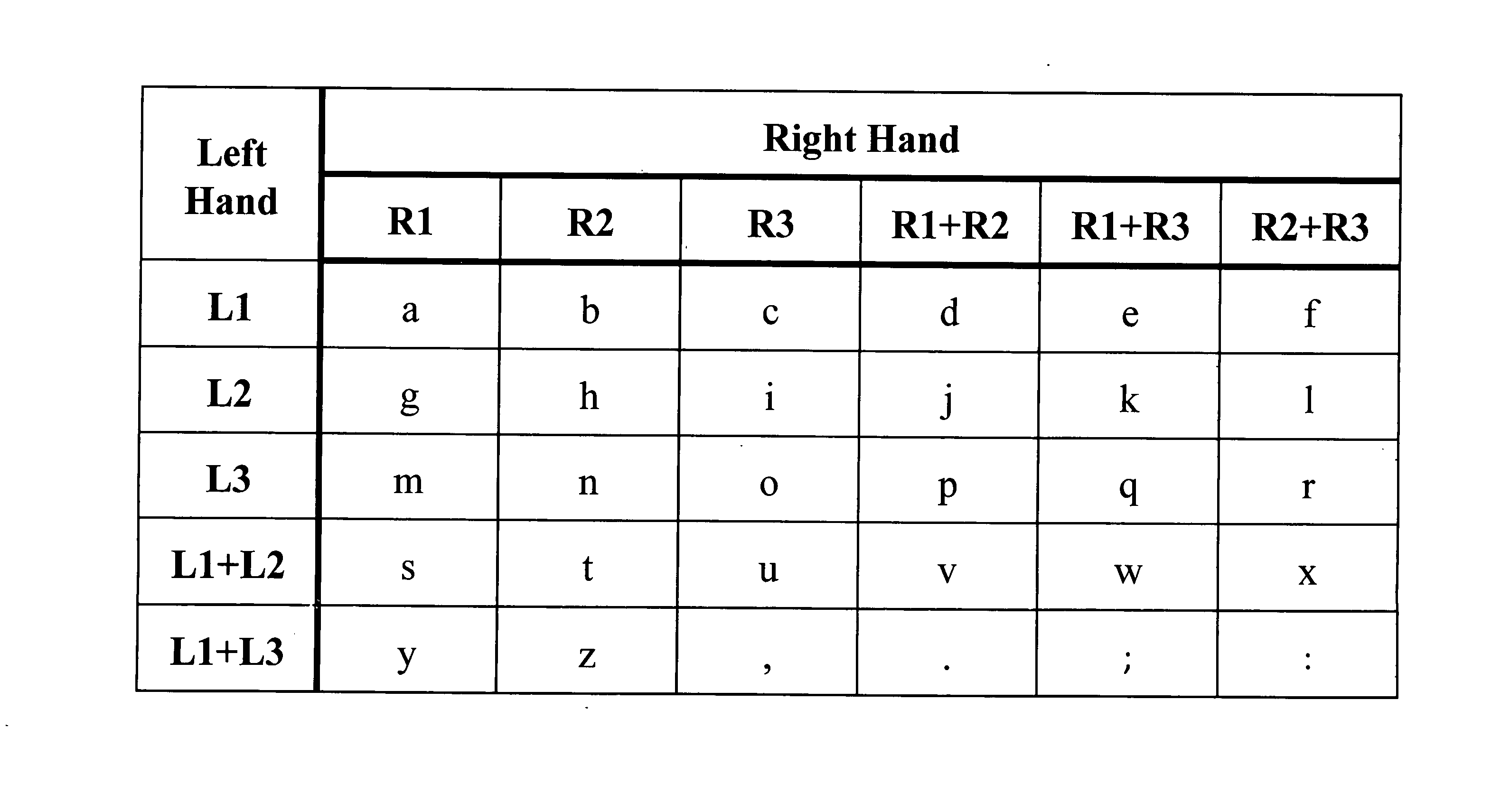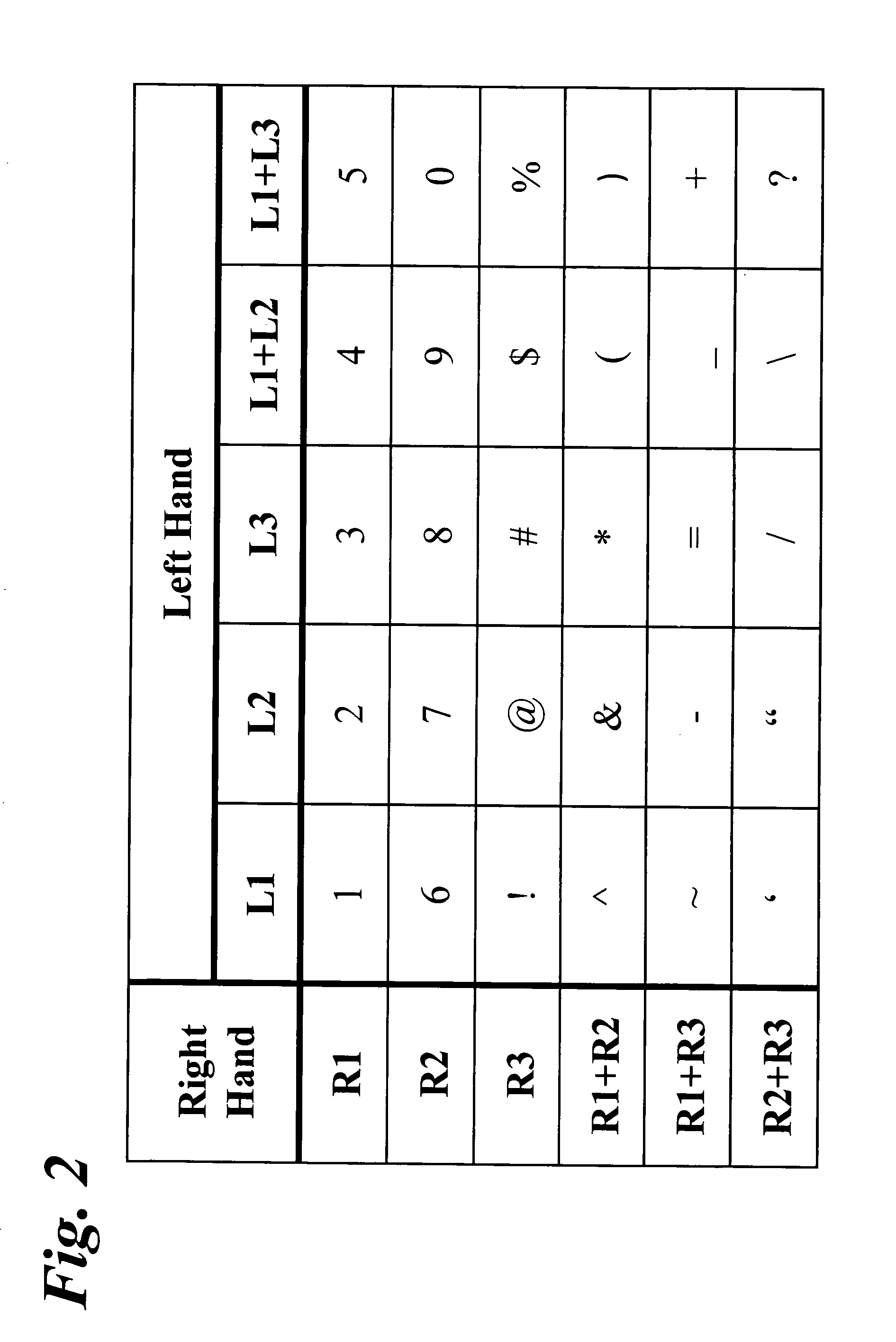Two-stage, gesture enhanced input system for letters, numbers, and characters
a gesture enhanced input and letter technology, applied in the field of two-stage, gesture enhanced input system for letters, numbers, and characters, can solve the problems of increasing the likelihood of errors, obscuring text and other pieces of information, and consuming approximately half of the display space of the touchscreen keyboard on a smartphone or table, so as to simplify the input process and expand the input rang
- Summary
- Abstract
- Description
- Claims
- Application Information
AI Technical Summary
Benefits of technology
Problems solved by technology
Method used
Image
Examples
Embodiment Construction
[0023]The detailed description refers to the accompanying drawings, which provide illustrations of exemplary and preferred embodiments of this invention. Because other embodiments are possible, especially in the wearable space (for example, using a bracelet instead of a watch), modifications can be made to the embodiments within the spirit and scope of the invention. Where possible, alternative embodiments within the spirit and scope of the invention are listed within the description. Therefore, the detailed description provided here is not meant to limit the invention. Instead, the scope of the invention is defined by the appended claims.
[0024]In a broad sense, the present invention represents a system that allows for a “shorthand” method of keyboard input. The system reduces the number of keys or buttons that are required to represent the range of alphabets, numbers, and characters used in everyday typing and communication. The invention solves the problem of existing methods of k...
PUM
 Login to View More
Login to View More Abstract
Description
Claims
Application Information
 Login to View More
Login to View More - R&D
- Intellectual Property
- Life Sciences
- Materials
- Tech Scout
- Unparalleled Data Quality
- Higher Quality Content
- 60% Fewer Hallucinations
Browse by: Latest US Patents, China's latest patents, Technical Efficacy Thesaurus, Application Domain, Technology Topic, Popular Technical Reports.
© 2025 PatSnap. All rights reserved.Legal|Privacy policy|Modern Slavery Act Transparency Statement|Sitemap|About US| Contact US: help@patsnap.com



